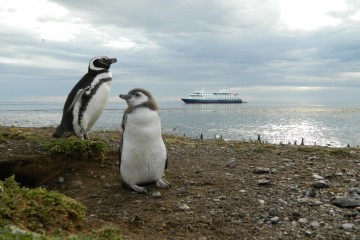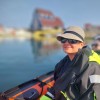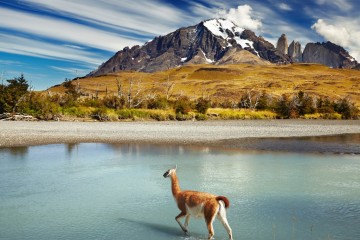Enigmatic, captivating and visually spectacular, Patagonia offers a sensory overload like few other places on earth. We have curated 10 incredible facts about Patagonia that will have you itching to pack your bags and discover it for yourself!
When it comes to travel to South America, this region is one of the most coveted travel destinations. With its reputation as an inhospitable yet captivating region, Patagonia has been entrancing explorers for centuries.
Nowadays, intrepid adventure seekers keep finding new cool ways to experience Patagonia and discover more about this mesmerizing place. And with our array of fascinating Patagonia facts, you can too!
Preparing for your own journey to this sensational end of the world? Kick off your adventure by joining us as we unveil the extraordinary wonders that define this breathtaking South American region.
Here are 10 incredible Patagonia facts you need to know. Click the links below to skip through the blog:
- Patagonia is H.U.G.E.
- Its most dominant feature is the Andes Mountains
- The first European explorer arrived in 1520 and encountered giants
- Humans have been living here for over 10,000 years
*Bonus history fact – the indigenous people of Patagonia used to sail around in dugout canoes
- There are almost as many penguins as people in Patagonia
- Patagonian Welsh is totally a thing
- Patagonia is an animal lover's paradise
- Patagonia is a land where wild horses run free
- Patagonia is where the Argentinian gaucho was born
*Bonus fact – Argentina’s Patagonia region is home to most of the country’s natural UNESCO sites
- Patagonia is the gateway to Antarctica explorations
*Bonus fact – Patagonia boasts epic glaciers of its own accord
1. Patagonia is H.U.G.E.
Patagonia covers an area of 1 million square kilometres and is larger than 80% of countries on earth. It comprises about half of Chile and half of Argentina and, remarkably, is home to less than 5% of either country's population – making it our planet's least populated region.
Patagonia's vast wilderness is nearly endless, and that’s a colossal chunk of its allure.
The lack of extensive infrastructure means travelling through Patagonia can be a logistical challenge if you’re short on time. Hence, the reason many visitors either make return trips to concentrate on specific areas or – as we do on our Signature Patagonia itinerary – take internal flights to cut travel time between the different areas.
There’s just so much magnificence here to discover and so much spectacular land to cover.
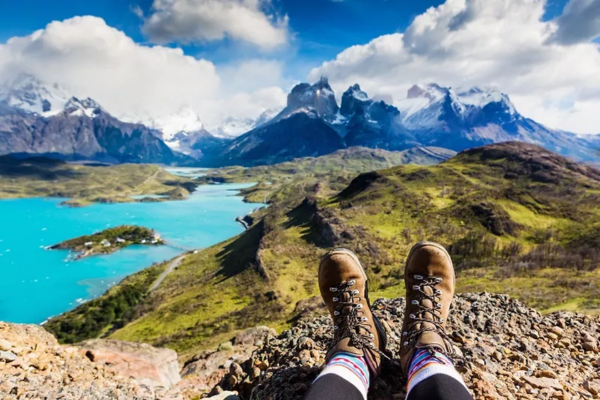
Looking for a cool place to give your hiking boots a good workout? Travel to Patagonia!
2. Its most dominant feature is the Andes Mountains
The Andes is the world’s longest mountain range, stretching over 7,000 kilometres from Venezuela in the north to Chile and Argentina in the south. A significant portion of it traverses Patagonia, eventually cascading into the frigid waters of the Southern Ocean in very dramatic fashion.
The Andes of Patagonia are responsible for the region's theatrical landscapes, its jagged high peaks (like Mt Fitz Roy, one of the world's most challenging climbs), volcanoes – some of which are still active – and maze of remarkable glacial lakes, like Lake General Carrera, Lake Puelo, and Lake Nahuel Huapi.
Another super cool Patagonia fact is that the myriad islands you see off the coast of its southernmost city, Ushuaia, are actually submerged Andean mountain peaks!
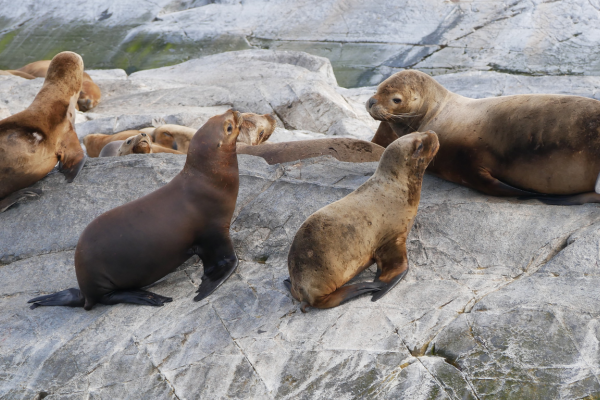
Peek-a-boo! Sea lions relaxing on a ‘submerged Andean mountain peak’ (i.e. an islet) off the coast of Ushuaia.
3. The first European explorer arrived in 1520 and encountered giants
Portuguese explorer Ferdinand Magellan (after whom the Strait is named) was the first European to set foot in Patagonia in 1520. He encountered Tehuelche natives and considered them giants 'so tall that the tallest of us only came up to their waist'. Magellan called the natives patagónes, or 'big feet', where the region's name originates.
Although the Tehuelches are believed to have been markedly taller than Europeans at the time, they were not exactly giants, per se. Archaeological finds tell us these hardy ancient inhabitants of Patagonia were nomadic by nature and exceptionally adept hunter-gatherers.
The Tehuelches may not have been true giants, but interestingly, the fossilized remains of one of the largest unearthed dinosaurs were discovered here, so it is fair to say Patagonia was indeed a land of giants, after all…
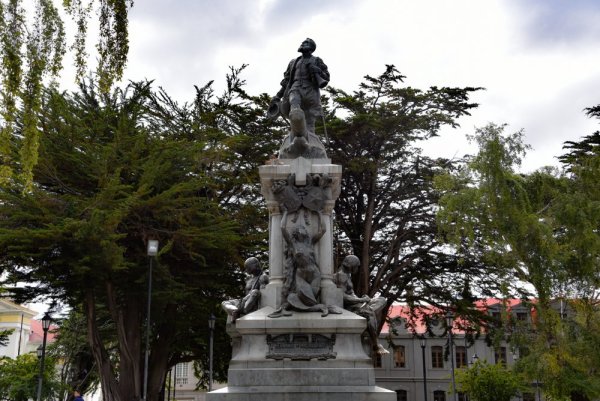
Ferdinand Magellan memorial statue in Punta Arenas, one of the largest cities in Patagonia.
4. Humans have been living here for over 10,000 years
As you battle the ever-changing climate on your Patagonia adventure tour, you may find it almost impossible to fathom that archaeological discoveries date human habitation here to more than 12,000 years ago. The most famous find, the Cave of Hands (Cuevas de las Manos), has been dated back to 8000 BC.
Aside from hand prints, the cave displays paintings of animals and hunting scenes.
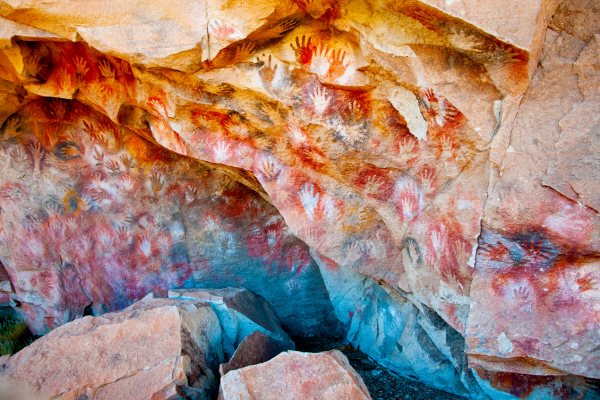
Argentina's Cave of Hands is the most significant archaeological find in Patagonia.
Bonus history fact: The indigenous people of Patagonia used to sail around in dugout canoes
By the time Europeans arrived in Patagonia, several tribes inhabited the region, all quite distinct from one another. In the north, they had adopted farming techniques and were the first to accept and even embrace the horseback riding culture introduced by the Spaniards. These would go on to become the original gauchos of Patagonia.
Meanwhile, in the central regions of Patagonia, indigenous tribes were still very much hunter-gatherers. And, in the far south, where fjords, lakes and rivers dictate passage, nomadic Chonos navigated their way around in dugout canoes called dalca.
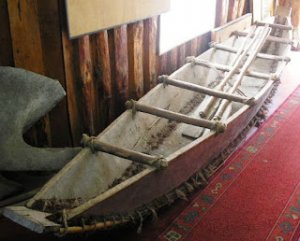
Reconstruction of an ancient dalca canoe on show in the ethnographic museum in Dalcahue, on Chiloe Island. The only authentic remains of dalca canoes found in Patagonia were taken to Europe by Swedish explorers and are on show in the Museum of World Culture in Gothenburg.
5. There are almost as many penguins as people in Patagonia
Who wouldn't want to visit Patagonia after learning that there are nearly as many penguins as people?! With a human population of 2 million and an estimated Magellanic penguin population of 1.7 million, we can safely call this region a penguin playground.
Aside from Magellanic, Patagonia is also home to gentoo and king penguins. Find out more about the amazing penguin conservation efforts in Patagonia.
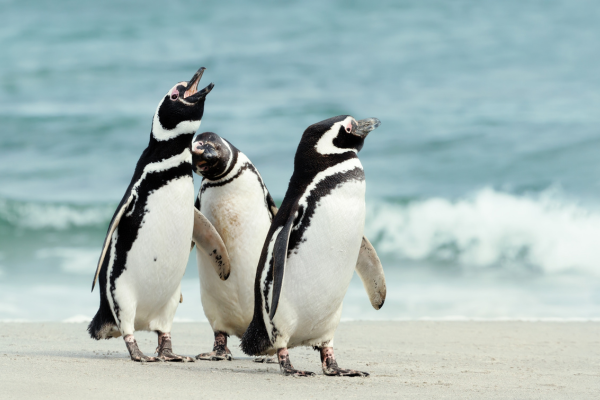
Patagonia’s Magellanic penguin is a near-threatened species. The best place to spot them is in Punta Tumbo, home to the region's largest colony - almost 200,000 breeding pairs live here.
6. Patagonian Welsh is totally a thing
During a significant immigrant influx into the New World, Patagonia welcomed a relatively modest boatload of Welsh newcomers. They believed their language and culture were threatened back home, so they hunted for new remote lands where they could settle and preserve their cultural identity for posterity.
Only 150 people are believed to have arrived in Patagonia from Wales in the mid-1800s. Despite the hardships they faced, they would go on to develop a remarkable cultural identity here. The newcomers mainly settled in the Chubut Valley and were welcomed by the indigenous Tehuelche people, who taught them how to hunt and gather. Having minimal (if no) contact with their original homeland, the Welsh immigrants’ language evolved in a unique direction.
Nowadays, it is believed over 5,000 Patagonian inhabitants speak a very distinct Welsh dialect that’s unique to the region.
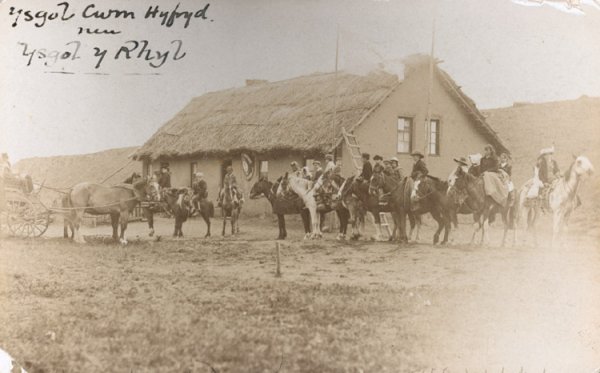
Photo of Cwm Hyfryd School, in Chubut, dating back to 1909. Until the area came under Argentinian control, lessons were taught in Welsh.
7. Patagonia is an animal lover's paradise
Patagonia boasts nine national parks, each one showcasing a distinct ecosystem and an astronomical array of wildlife, most of which is endemic to the region.
Here, you’ll also find some of the world’s best whale-watching spots, with the whole region home to a flurry of marine species, including humpback, orcas, southern right whales, blue whales, elephant seals and, of course, sooooo many penguins!
Humpback whales in Patagonia are the most sought-after on whale-watching trips, thanks to their penchant for above-water acrobatics. The best time to spot whales in Patagonia is between August and October, just before the start of the hiking season
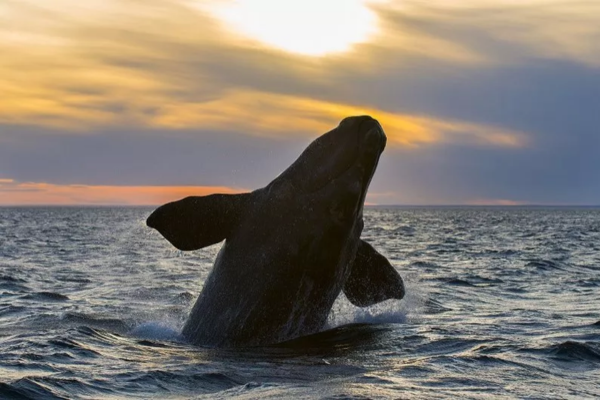
Humpback whales in Patagonia are the most sought-after on whale-watching trips, thanks to their penchant for above-water acrobatics. The best time to spot whales in Patagonia is between August and October, just before the start of the hiking season.
8. Patagonia is a land where wild horses run free
The Darwin Mountains around Cape Horn harbour one of the world's last and largest remaining herds of wild horses. The baguales, as the unique breed is called, are descendants of Andalusian horses introduced by Europeans in the 16th century.
Patagonia’s wild horses have not had direct contact with humans for over a century and have evolved outstanding adaptations to survive in such a harsh environment. Their main predator is the mountain lion, so their numbers have not grown much in recent decades.
In 2014, a non-profit organization was formed to safeguard these astonishing creatures. Only a few hundred baguales are estimated to survive in Patagonia, 100 in the Torres del Paine National Park alone.

The wild horses of Patagonia have intrigued scientists for years due to their ability to tackle immense climatic hardships and continue thriving nonetheless.
9. Patagonia is where the Argentinian gaucho was born
The most legendary horseman who ever lived, the Argentinian gaucho, was born and bred in the vast Pampas region in Patagonia.
Nowadays, being a 'cowboy' is still a very respectable profession down here. Local herdsmen still wear traditional riding attire, including bombachas (baggy trousers), hats, and leather boots. All three are considered cultural icons in Argentina.
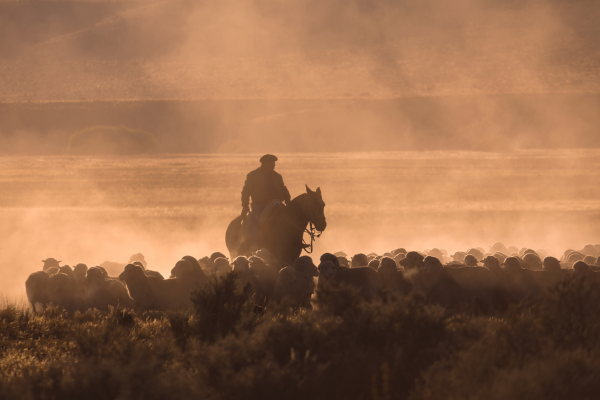
Gauchos in Patagonia were historically nomadic, leading a life of travel and work, often herding livestock and working on remote ranches called "estancias."
Bonus fact: Argentina’s Patagonia region is home to most of the country’s natural UNESCO sites
Argentina boasts 15 UNESCO heritage-listed sites, five natural and the remaining historical and cultural. Of the five natural highlights, four are in Patagonia. They are the Valdez Peninsula and Los Alerces National Park in the north and, in the south, the Cave of Hands detailed above and Los Glaciares National Park, which it shares with Chile.
P.S. If it were up to us, Argentina's Mendoza Wine Region would also be considered a heritage treasure!
Discover more reasons to visit Argentina here.
10. Patagonia is the gateway to Antarctica explorations
Did you know it's merely 540 nautical miles from the tippy-toe of Patagonia to the northern coast of the Antarctica Peninsula, across the legendary Drake Passage?
Given it is the closest inhabited region to our planet’s southern frozen frontier, Patagonia and its southern city of Ushuaia are the most popular springboards for cruises to Antarctica.
Ushuaia is the famous ‘southernmost city in the world’ and a fantastic base to explore the further reaches of Tierra del Fuego. Exploring Patagonia is the most popular thing to do before or after an Antarctica cruise.
Read this guide to learn more about combining the two phenomenal destinations.
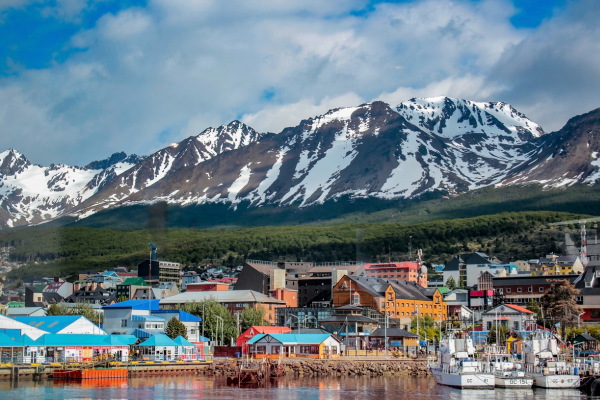
Ushuaia, the southernmost city in Patagonia, is also the most popular springboard for adventure expedition cruises to Antarctica
Bonus geography fact: Patagonia boasts epic glaciers of its own accord
Not to be outdone by the White Continent, Patagonia boasts some pretty awe-inspiring glaciers of its own accord. The Southern Patagonian Ice Field is the largest outside Antarctica and Greenland and is the source of numerous glaciers.
The most famous, by far, is Perito Moreno Glacier, one of the few advancing glaciers left on earth and perhaps its most iconic. Perito Moreno is renowned for its dramatic icefalls and the frequent calving of massive icebergs into Lake Argentino.
As mentioned earlier, the Andes Mountains are responsible for much of the creation of Patagonia's glaciers. Yet it's the specific combination of topography and the region's latitude and climate that has nurtured them through the aeons.
One not-so-charming Patagonia fact is that climate change has considerably detrimental effects on its glaciers. Conservation efforts and research are ongoing to understand and protect these precious natural resources.
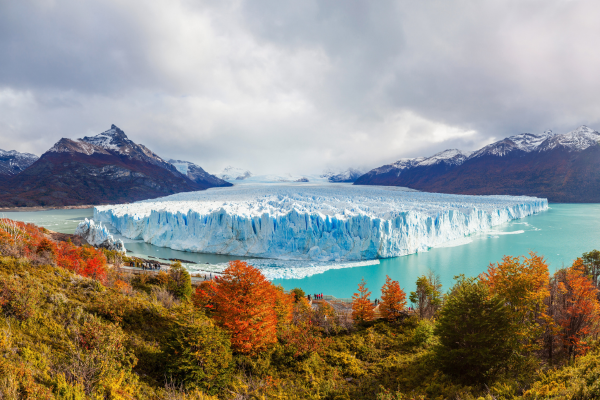
Patagonia’s Perito Moreno Glacier, one of the region’s most iconic highlights.
Need some more inspiration for your upcoming trip to Patagonia? Here are a few articles you may find helpful:
Let Viva Expeditions take you to Patagonia and experience South America's wild beauty
Here at Viva Expeditions, we don’t mind admitting to having a full-blown crush on Patagonia. Actually, we think it may be true love. And what’s not to love, given all these fascinating Patagonia facts?
Those breathtaking landscapes are seen nowhere else on earth, and the remoteness makes us feel utterly disconnected from the rest of the world whenever we visit.
So let us take you there.
We'll show you the incredible wonders in this unforgettable southernmost region of South America. We promise not to get even a teeny bit jealous when you also fall head over heels in love with the place. Something tells us you will.
Our Signature Patagonia Tour has been designed to showcase the most arresting highlights of the region. From Santiago in the north to the Perito Moreno Glacier in the south and an outstanding array of highlights in between, this sensational 9-day itinerary uses internal flights to cut travel time, leaving you with much more time to explore the region's two best highlights: Los Glaciares and Torres del Paine national parks.
Here is a sneak peek of highlights from the tour:
See our complete collection of Patagonia Tours.
Laura Pattara
Laura Pattara writes for Viva Expeditions with a special love for all things Latin America. She had guided overland tours across the continent, reached Machu Picchu five times on foot, and even dressed up as a giant toucan for Carnaval. With a degree in languages and two decades of global travel experience behind her, Laura has a long-standing love for the Andes, soaring condors, and a truly delicious empanada.
|
